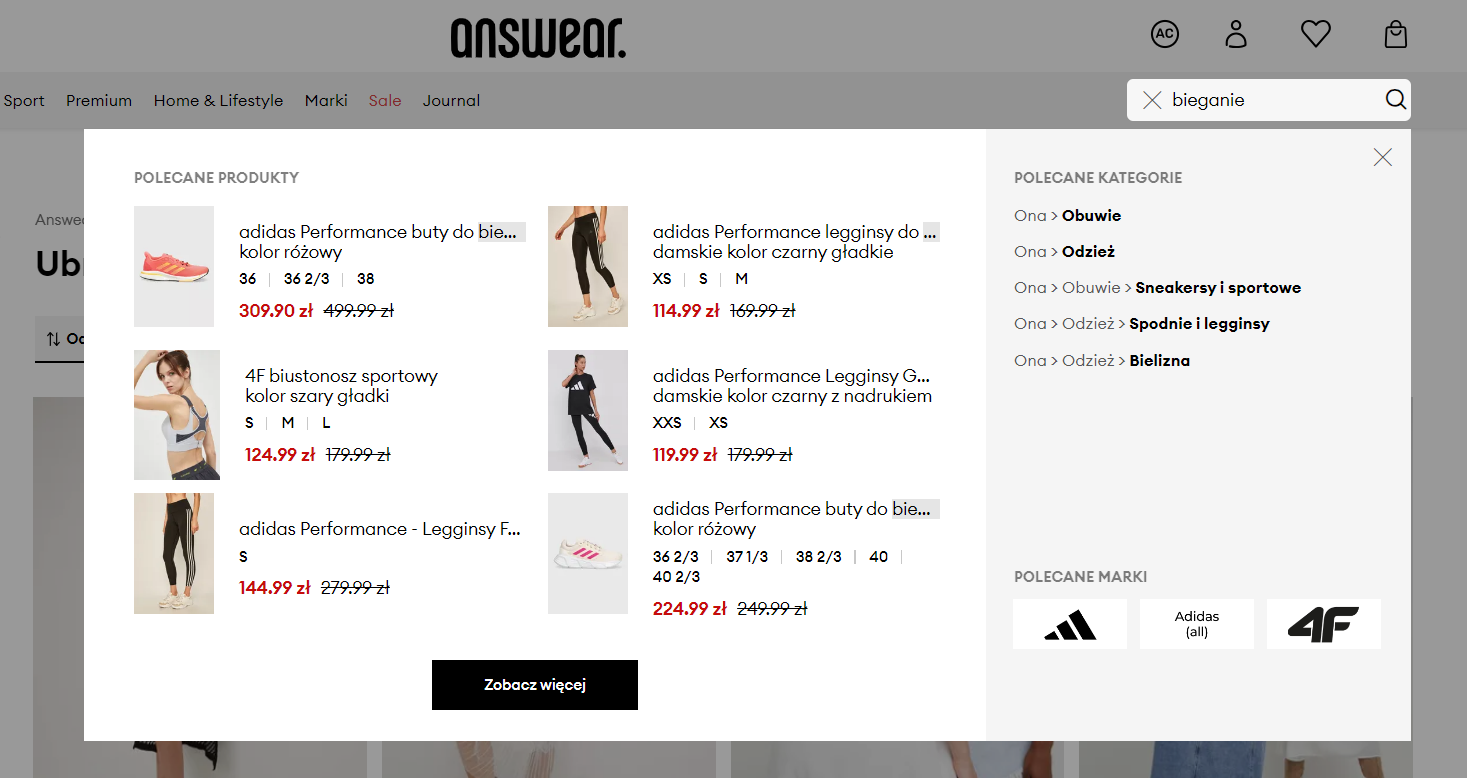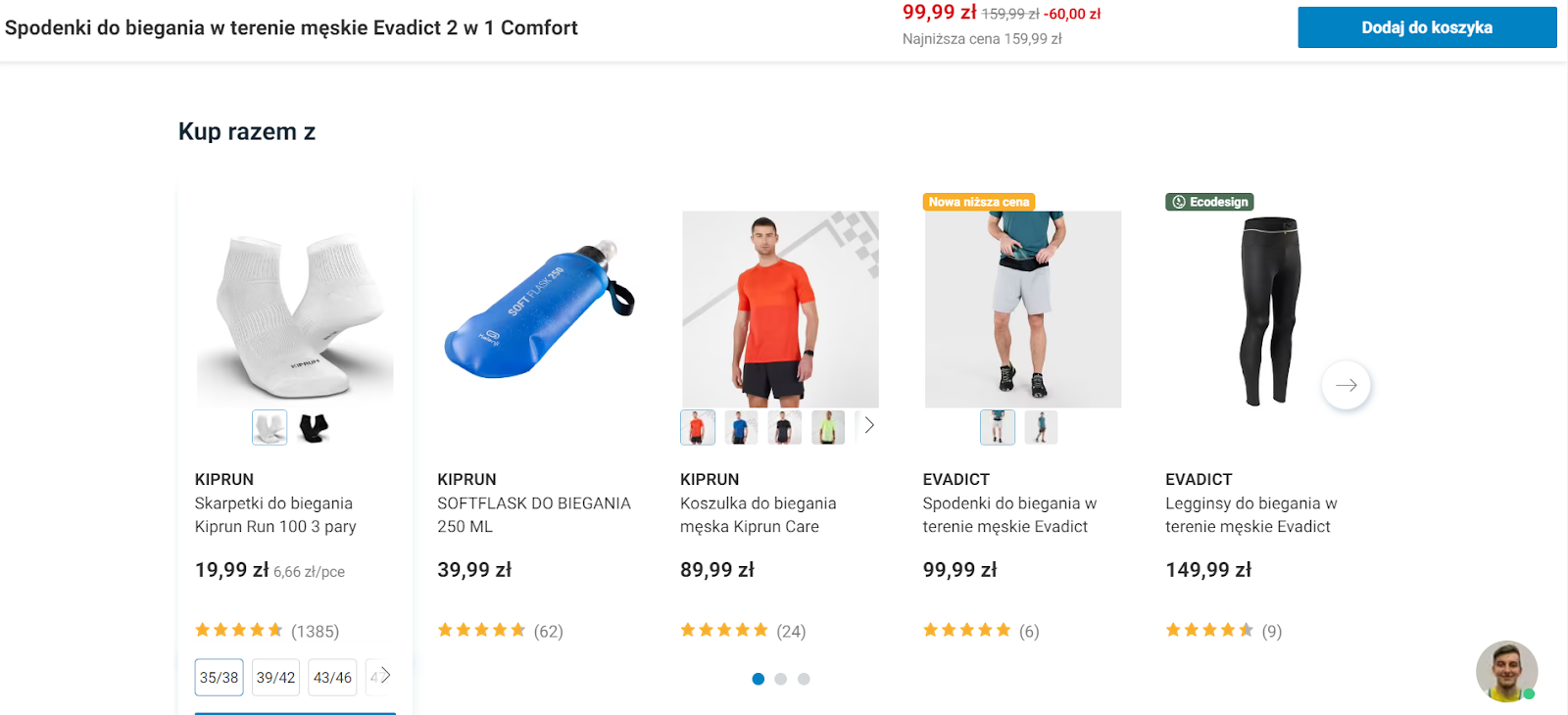Personalized shopping experiences can satisfy customers and bring significant benefits to companies that offer them. However, customer expectations for "great" experiences evolve quickly – guided by the best practices of brands in the market. Nowadays, customers want to be consistently recognized and understood. They want to receive experiences tailored to their unique context. They expect this at various touchpoints and through different channels. All of this should happen in real-time.
Nevertheless, many companies encounter difficulties in delivering the individual personalization that customers expect. Without a clear path to success, e-commerce sellers often try to compensate for the imperfections of their customer experience by implementing individual tools. This leads to the creation of a fragmented range of marketing and commercial solutions. It increases the complexity of processes, creates data silos, and lowers the quality of the customer experience.
Additionally, companies struggle with a lack of skilled personnel and other resources. In the current economic climate, this is a big challenge. In fact, 74% of companies admit that they lack the internal talents necessary for effective large-scale personalization.
Personalization is a challenge – but an effective AI strategy can prove helpful
Looking at companies that currently deliver excellent customer experiences, it can be noticed that they successfully manage two key aspects:
- Defining a clear personalization strategy – According to research, 75% of leaders in personalization invested time and energy to establish an effective personalization strategy.
- Using artificial intelligence (AI) and machine learning (ML) – They serve to deliver personalized experiences on a large scale. As Deloitte Digital emphasizes, "It's about leveraging the best aspects of people and machines to deliver the most relevant messages and experiences, automatically."
Applying a clear strategy and supporting employees' efforts with AI enables companies to maximize value with less resource utilization. This leads to delivering personalized shopping experiences to every customer, every time.
In this article, we present five methods of using AI to implement personalized shopping experiences on a large scale. With this knowledge, e-commerce sellers can develop their own AI strategies and look for solutions that are most important to them. This leads to positive outcomes and increased customer engagement.
Strategy 1 – Use AI for Customer Segmentation
Personalization is based on using customer data to design and implement experiences tailored to their unique needs and contexts.
Customer segments play a key role, acting as a link between data and delivered experiences. Currently, many online sellers manually segment their customers. They base this on basic demographic data, such as location, age, gender, and a limited amount of behavioral data. Unfortunately, this is a slow process, not offering the appropriate level of detail for hyper-personalized experiences. It may also overlook other important types of data, such as real-time behavioral or transactional data – for example, viewed items, browsed categories, purchase history, and more.
AI helps identify and create valuable customer segments
Leaders in personalization use AI models to identify and create customer segments without the need to engage analytical teams. AI uses customer behavioral data (ad clicks, opened emails, in-store activity), e-commerce data (viewed products, preferences, previous purchases, returns), and data from other sources (loyalty information from CRM systems) to build models that predict the likelihood of certain customer actions in the future. This number is referred to as a propensity score.
For example, an AI model could identify customers who previously returned products and have not visited the site for six months as "high probability of churn." This result can then be transformed into a segment. The seller then has the opportunity to reactivate customers from this segment through customer service, targeted discounts, ads, or other mechanisms. Although some AI solutions operate as "black boxes," the best of them combine transparency with automation, explaining the basis of propensity scores – for example, "the customer has not browsed product pages in a specific category."
Automating customer segmentation in real-time with AI
In addition to using AI to identify and create effective segments, leaders in personalization often automatically move customers between segments in response to their real-time behavior. For example, if a customer usually shops in the men's category but buys something from the women's category for Valentine's Day, the system can automatically move them to the "women's gifts" segment. As a result, during the same browsing session, the customer can immediately receive a personalized experience that highlights the most interesting gifts for women and related promotions.
As a customer, if you've ever bought something one-off, like new winter shoes, and then received endless ads for those same shoes, you know how frustrating poorly designed segments based on the past can be. However, AI models based on propensity scores can analyze your past purchasing behavior and place you in a segment inclined to buy complementary products, such as warm socks for new shoes. This allows the brand to deliver a more relevant and helpful experience.
Thanks to the application of AI in identifying and creating relevant segments and automating customer segmentation, sellers can save time, delivering more effective, personalized experiences for their customers.
Strategy 2 – Use AI to facilitate product discovery
When customers visit e-commerce sites, retailers have just seconds to present the most relevant products. On-page search, category browsing and product recommendations are the three most effective methods to present customers with desired items. All three can use AI to show each customer the most relevant product, increasing conversions.
Search experience optimization
On e-commerce sites, nearly 40% of visitors use the search bar to find products they're interested in. These customers make purchases almost twice as often as those who don't use the search function, highlighting the importance of an effective search feature. Nonetheless, more than half of the top-performing e-commerce sites are characterized by low search effectiveness. Many of these problems can be minimized with AI, which personalizes and optimizes search on e-commerce sites.
Advanced search features suggest various possibilities. For example, when a customer starts typing a query, they cope with spelling errors. They also offer synonyms when a customer uses a different language than the brand – for example, searching for "jackets" instead of "coats". Moreover, AI-based search features can analyze customer behavior on the site to present the most relevant products. For example, if a customer spends time in the "running gear" section, when they type "pants", AI algorithms can instantly adjust the search results so that running pants are presented before jeans.
When customers browse a large product catalog, they often need help narrowing down the search to items they're interested in (colors, sizes, materials, types, etc.). Sellers often place filters on the sidebar to make it easier for customers to narrow down the results and find what they're looking for. AI-based search features can dynamically suggest filters depending on the query. For example, an online tool store could suggest "screw length" as a dynamic filter for a "screws" search, instead of a standard set of filters such as color, material, etc., which may be less useful.

Live Search suggests searches when shoppers type in text, and uses AI to display the most relevant filters for each search.
AI capabilities create a powerful search experience that allows customers to find exactly what they're looking for every time.
Optimizing the browsing experience
Although many people use the search bar, about 60% of shoppers prefer to use site navigation to discover products they need. Therefore, it's essential to use AI to deliver an advanced, personalized browsing experience that increases conversion and customer satisfaction.
Many e-commerce sellers use manual merchandising, setting products on category pages or using "drag and drop" tools to configure interactions with the customer. However, such an approach is often static, meaning it does not adapt to individual customers or context.
Alternatively, AI can be used to dynamically sort products for each customer, based on their current and past shopping behaviors on the site. Depending on where customers spend their time on the site, AI models assess affinities to categories and products, using them to present customers with the most interesting products to them.
Using the same category affinities, navigation on an e-commerce site can also be personalized for individual customers. For example, if a customer only browses "women's" categories, those categories can be placed at the top of the navigation menu to speed up the customer's search process for relevant products.

Products can be moved higher or lower on category pages using AI algorithms
Offer relevant product recommendations
Product recommendations are the third key piece of the product discovery puzzle, excellent for optimization with AI. Many companies currently do not use customer segmentation to personalize their product recommendations. Using segmentation to deliver product recommendations that are closely matched to the buyer's behavior proves to be extremely effective. Consider the previous example of a customer buying running equipment – this customer could be classified into the "runners" segment. Then, the site would update product recommendations, prioritizing running apparel in every category visited by the customer

Rekomendacje produktów dostarczają indywidualnie dostosowane sugestie dla każdego klienta.
91% of consumers say they are more likely to shop with brands that offer relevant product recommendations and offers. Using AI to generate precise and useful product recommendations can bring significant business benefits.
Strategy 3 — Apply AI to Create Personalized Content
When considering what can be customized on an e-commerce site, content is a key element. Banners on the homepage, text blocks, and other site elements decide the look and feel that the brand builds. However, before sellers can apply personalized content on their pages, they must first generate it, which can prove to be a difficult and time-consuming process. As businesses grow and the need for content personalization for different screens, channels, global regions, and brands increases, the complexity of the task grows. In fact, a study conducted by IDC found that 85% of marketing professionals feel pressure to create assets and execute campaigns faster.
AI can help by supporting the content delivery chain, which automates manual tasks – from generating new assets, through labeling existing ones and producing versions of different sizes, to composing or modifying modular content for personalization.
Automating manual content creation processes
Leaders in personalization use asset management systems supported by AI, which facilitate the production and personalization of content through automatic processes. For new assets, AI helps create content with features such as background removal, object swapping, extracting fragments from existing images, and placing them in existing brand assets. Modern AI tools are even capable of generating three-dimensional product models and creating sets of two-dimensional product images, eliminating the need for brands to organize time-consuming product photo shoots. Once assets are created, AI can identify objects on each of them and tag them, making it easier to find and implement them on e-commerce pages.Strategy 4 – Use AI to Deliver and Optimize Personalized Promotions
After creating content, the role of sellers is to deliver relevant information, promotions, and messages to the right customers to maximize their engagement and conversion. Artificial intelligence is a powerful tool that enables content and promotion personalization. This is possible through the use of AI-supported segments, as well as analyzing customer actions on the site.
Personalizing content for effective customer engagement
When customers interact with a brand through websites, it's crucial that the content is adequate and naturally fits into the current context of the user. For example, if a customer is looking for an iPhone, but the main page of an electronics brand is dominated by Samsung, it may direct the user to seek information elsewhere. For this reason, content should be tailored to the current actions of the user on the site and take into account their historical data. Leading brands automatically adapt the presented content, responding to the behavioral and profile data of the user in real-time, to deliver the most engaging experiences.
Using AI for effective personalization of promotions
Promotions, like content, can effectively contribute to increased conversion. However, only when they are delivered to the right customers, requiring an additional incentive to make a purchase. Many sellers offer discounts to all or broad groups of customers, even if the latter would decide to buy without using promotions. Such a lack of personalization not only negatively affects margins but can also teach customers to expect promotions before deciding to make a purchase.
Artificial intelligence can be used to propose promotional offers – or deliberately not offer them – for each visitor, taking into account their profile and behavioral data. For example, a seller using AI-supported segments and propensity scoring could notice a customer with a high readiness to buy shoes at full price. Instead of offering them a 30% discount, the seller could opt for a different form of promotion, aimed at increasing the value of the basket, such as free shipping for a basket value of 300 złoty or more for a pair of shoes worth 200 złoty.
Optimizing personalized content and promotions
Leading brands do not treat personalization as a one-time task. Many of them successfully use AI-based tools to test the effectiveness of content and promotions, automatically place various variants for different customer groups, and then optimize them in real-time. For example, AI can distribute a banner or promotion to different audience groups. Then automatically select the most effective proposal and redirect traffic to that chosen offer.
When brands effectively use AI to deliver rich, personalized experiences, customers feel uniquely understood. Through continuous testing and optimization with AI, market leaders can constantly refine the way they serve their customers, unlocking additional value.

A/B Tests or multidimensional help determine the most effective content for each customer.
Strategy 5 – Use AI to Personalize at Every Brand Interaction Stage
Customers expect that every point of interaction with brands – from initial messages, through email campaigns, educational materials, loyalty offers, updates, mobile notifications, and many others – will be personalized. Coordinating all these touchpoints manually, without AI support, can be not only exceptionally difficult but often leads to a fragmented and inconsistent experience for the customer. Moreover, marketers often have to rely on teams analyzing data to understand the relationships between different touchpoints and key performance indicators (KPIs).
AI supporting the personalization of customer experiences
Tools using artificial intelligence are able to effectively use real-time customer data to propose the most appropriate next experience for each customer, regardless of the channel or device they use – whether it's email or push notifications on mobile devices. Advanced AI models analyze and categorize each message directed to a given customer. Then adjust its rank as the customer engages with the brand. For example, after a customer makes a purchase, the brand can instantly respond to this event by directing a targeted announcement to them. This announcement not only takes into account the made purchase but also proposes complementary products. The most effective solutions use models focused on specific goals. They optimize actions based on priority KPIs – such as maximizing the conversion rate (CVR) or increasing revenues.
By using AI to identify the most effective next interactions with customers, brands can deliver consistent and personalized experiences at every stage of the customer lifecycle. Even when the customer moves between different channels and devices.
A Simple Path to Personalization with AI
Although implementing effective personalization may seem like a complex task, it doesn't have to be. There are many methods for creating powerful, personalized experiences where artificial intelligence can help through automation, coordination, delivery, and optimization. Personalization tools can interact with existing technologies and data, contributing to transforming your business and customer experience. The most advanced digital commerce solutions often include many built-in AI features. This allows focusing on strategy and key performance indicators that are most important for your business.
-1.png?width=290&name=png(1)-1.png)





.jpg?width=300&name=Frame%204728%20(1).jpg)
